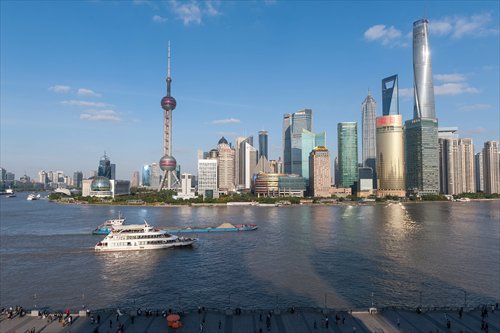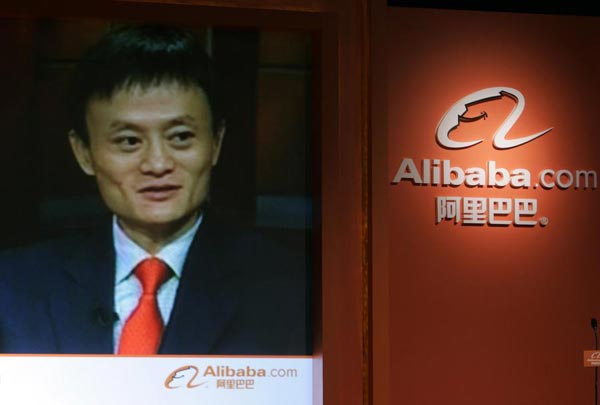China’s Big Banks: learn how they overprice & misallocate loans while treating borrowers like conmen
Do you have the financial acumen to run the lending department of one of China’s giant state-owned banks? Let’s see if you qualify. Price the following loan to a private sector Chinese company. Your bank is paying depositors 0.5% interest so that’s your cost of capital. The company has been a bank customer for six years and now needs a loan of Rmb 50mn (USD$8 mn). The audit shows it’s earning Rmb 60mn a year in net profits, and has cash flow of Rmb 85mn.
You ask the company to provide you with a first lien on collateral appraised at Rmb 75mn and require them to keep 20% or more of the loan in an account at your bank as a compensating deposit. Next up, you ask the owner to pledge all his personal assets worth Rmb 25mn, and on top, you insist on a guarantee from a loan-assurance company your bank regularly does business. The guarantee covers any failure to repay principal or interest. What annual interest rate would you charge for this loan?
If you answered 5% or lower, you are thinking like a foreigner. American, Japanese or German maybe. If you said 13% a year, then you are ready to start your new career pricing and allocating credit in China. At 10% and up, inflation-adjusted loan spreads to private sector borrowers in China are among the highest in the world, particularly when you factor in the over-collaterallization, that third-party guarantee and fact the loan is one-year term and can’t be rolled over. As a result, the company will actually only have use of the money for about nine months but will pay interest for twelve. Little wonder Chinese banks have some of the fattest operating margins in the industry.
Chinese private businessmen are paying too much to borrow. It’s a deadweight further slowing China’s economy. We are quite keen, by the way, on private debt investing in China.
The high cost of borrowing negatively impacts corporate growth and so overall gdp growth. It is also among the more obvious manifestations of an even more significant, though often well-hidden, problem in China’s economy: the fact that nobody trusts anybody. This lack of trust acts like an enormous tax on business and consumers in China, making everything, not just bank credit, far more expensive than it should be.
Online payment systems, business contracts, visits to the doctor, buying luxury products or electronics like mobile phones or computers: all are made more costly, inefficient and frustrating for all in China because one side of a transaction doesn’t trust the other. One example: Alibaba’s online shopping site, Taobao, will facilitate well over USD$200bn in transactions this year. Most are paid for through Alipay, an escrow system part-owned and administered by Alibaba. Chinese shoppers are loathe to buy anything directly from an online merchant. They generally take it as a given that the seller will cheat them.
Most of the world’s computers and mobile phones are made in China. But, Chinese walk a minefield when buying these products in their own country. It’s routine for sellers to swap out the original high-quality parts, including processors, and replace them with low-grade counterfeits, then sell products as new. Chinese, when possible, will travel outside China, particularly to Hong Kong, to buy these electronics, as well as luxury goods like Gucci shoes and Chanel perfume. This is the most certain way to guarantee you are getting the genuine article.
In the banking sector, loans need to have multiple, seemingly excessive layers of collateral, as well as guarantees. Banks simply do not believe the borrower, the auditors, their own in-house credit analysts, or the capacity of the guarantee firms to pay up in the event of a problem.
Disbelief gets priced in. This is the reason for the huge loan spreads in China. Banks regard their own loan documentation as a work of fiction. It stands to reason that if a company’s collateral were solid and the third-party guarantee enforceable, then the cost to borrow money should be at most a few points above the bank’s real cost of capital. Instead, Chinese companies get the worst of all worlds: they have to tie up all their collateral to secure overpriced loans, while also paying an additional 2%-3% a year of loan value to the third-party credit guarantee company for a guarantee the bank requires but treats as basically worthless.
In the event a loan does go sour, the bank will often choose to sell it to a third party at discount to face value, rather than go to court to seize the collateral or get the guarantee company to pay up. The buyer is usually one of the state-owned asset recovery companies formed to take bad debts off bank balance sheets. Why, you ask, does the bank require the guarantee then fail to enforce it? One reason is that Chinese private loan-assurance companies, which usually work hand-in-glove with the banks, Â are usually too undercapitalized to actually pay up if the borrower defaults. Going after them will force them into bankruptcy. That would cause more systemic problems in China’s banking system.
Instead, the bank unloads the loan and the asset recovery companies seize and sell the only collateral they believe has any value, the borrower’s real estate. The business may be left to rot. The asset management companies usually come out ahead, as do the loan guarantee companies, which collect an annual fee equal to 2% to 3% of the loan value, but rarely, if ever, need to indemnify a lender.
Don’t feel too sorry for the bank that made the loan. Assuming the borrower stayed current for a while on the high interest payments, the bank should get its money back, or even turn a profit on the deal. Everyone wins, except private sector borrowers, of course. Good and bad like, they are stuck paying some of the highest risk-adjusted interest costs in the world.
When foreign analysts look at Chinese banks, they spend most of their time trying to divine the real, as opposed to reported, level of bad debts, devising ratios and totting up unrealized losses. They don’t seem to know how the credit game is really played in China.
Most of the so-called bad debts, it should be said, come from loans made to SOEs and other organs of the state. Trust is not much of an issue. SOEs and local governments generally don’t need to pledge as much collateral or get third-party guarantees to borrow. A call from a local Party bigwig is often enough. The government has shown it will find ways to keep banks from losing money on loans to SOEs. The system protects its own.
Chinese banks should be understood as engaged in two unrelated lines of business: one is as part of a revolving credit system that channels money to and through different, often cash-rich, arms of the state. The other is to take in deposits and make loans to private customers. Â In one, trust is absolute. In the other, it is wholly absent.
Many Chinese private companies do still thrive despite a banking system that treats them like con artists, rather than legitimate businesses with a legitimate need for credit. The end result: the Chinese economy, though often the envy of the world, Â grows slower and is more frail than it otherwise would be. Everyone here in China is paying a steep price for the lack of trust, and the mispricing of credit.
























